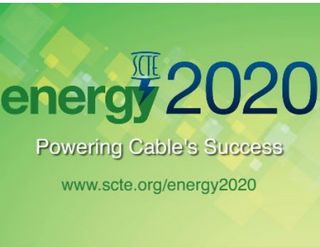Cable-Tec Expo: Amped About ‘Energy 2020’

New Orleans -- Participants in the SCTE’s Energy 2020 program, which aims to substantially reduce energy consumption, cost and grid dependency by the year 2020, packed the room here Thursday at Cable-Tec Expo to check in on the progress of the year-old effort.
Astronaut John Herrington joined Society of Cable Telecommunications Engineers president and CEO Mark Dzuban, Comcast executive vice president and chief network officer John Schanz, and Liberty Global EVP and chief technology officer Balan Nair to kick off the discussion, in part to underscore the universal importance of energy conservation.
Dzuban summed it up this way: “Energy 2020,” he said. “is the future.”
Herrington, who’s done three space walks, including one in 2002 involving a stream of ions to serve as the grounding strap “so that I wasn’t,” said that Energy 2020 resembles space missions, especially from a partnership perspective. “We had 16 worldwide partners when we built the space station - it was a collaborative effort of people who worked in many cases for competing companies, but the mission was the mission," he said.
Liberty Global spends $180 million annually on energy, said Nair, at a rate of six to 12 cents per kilowatt hour, which will rise to the 20 cent range by 2020. “Business as usual is not looking very good on that trajectory,” he said. “As an industry, we really need to come together and figure this out. That’s Energy 2020.”
As a quick reminder, here are the overarching goals of Energy 2020:
-Reduce Energy Costs by 25% on a Unit Basis;
Multichannel Newsletter
The smarter way to stay on top of the multichannel video marketplace. Sign up below.
-Reduce Power Consumption by 20% on a Unit Basis;
-Reduce Grid Dependency by 10%; and
-Optimize Technical Facilities by 20%.
Session highlights:
- Components in the outside plant, and particularly power supplies, represent close to 80% of on operator’s total power expenditure, said Joe Jensen, EVP and CTO of Block Communications (which owns Buckeye CableSystem).
- A financial model and template with six variations for network type – hybrid fiber coax (HFC), RFoG (RF over Glass), and the PONs (passive optical networks) -- is well underway for all operators to use, to assess their current consumption levels, and adapt, said Gary Mitchinson, head of access engineering for Liberty Global.
- Nearly a dozen short and long term options exist to lower power consumption in outside plant actives, said Dave Fellows, CTO and co-Founder of Layer3 TV, a startup “next-generation” cable operator, and Rob Howald, VP of network architecture for Comcast. Among them: Relaxing amplifier specs for areas like hum modulation, which matters less in an all-digital world; shutting down high frequency modulators under light traffic load; and taking advantage of peak-to-average power reduction when DOCSIS 3.1-based gear arrives.
Dan Cooper, vice president of critical infrastructure at Time Warner Cable, later outlined SCTE 2020’s accomplishments, noting that 15 standards and practices have been published or are now “in-flight., and progress in establishing the industry’s energy baseline metrics.
Energy 2020 has also managed to significantly expand its buy-in from partners. In January, the initiative counted 95 members across 30 companies, and has since expanded to 299 members spanning 70 companies.
The premise of the initiative that became Energy 2020 was established by the industry in 2009, that “energy should never be an obstacle to our industry’s growth or competitiveness”
“There is a lot more to do,” Schanz added. “It’s why we call it Energy 2020.”










